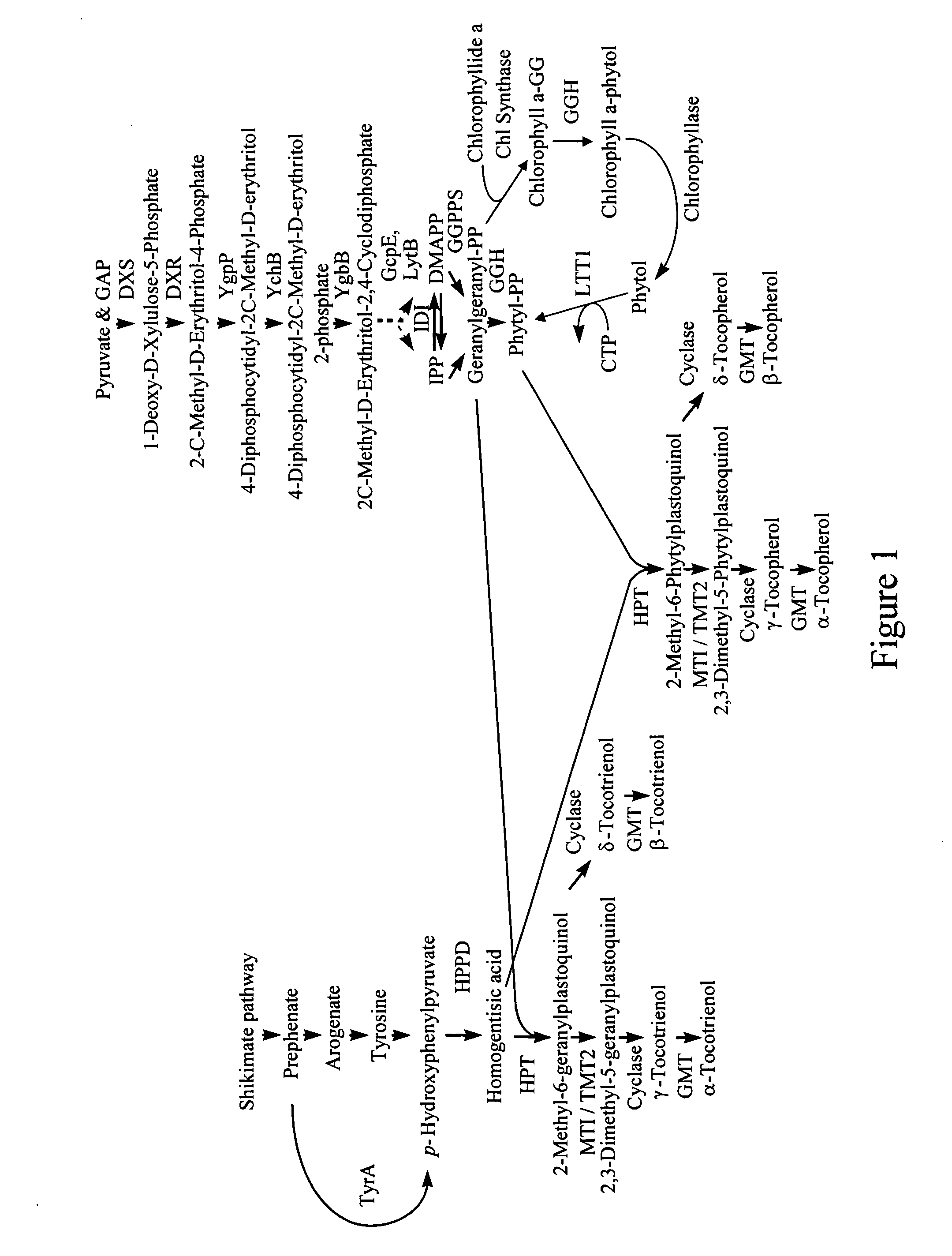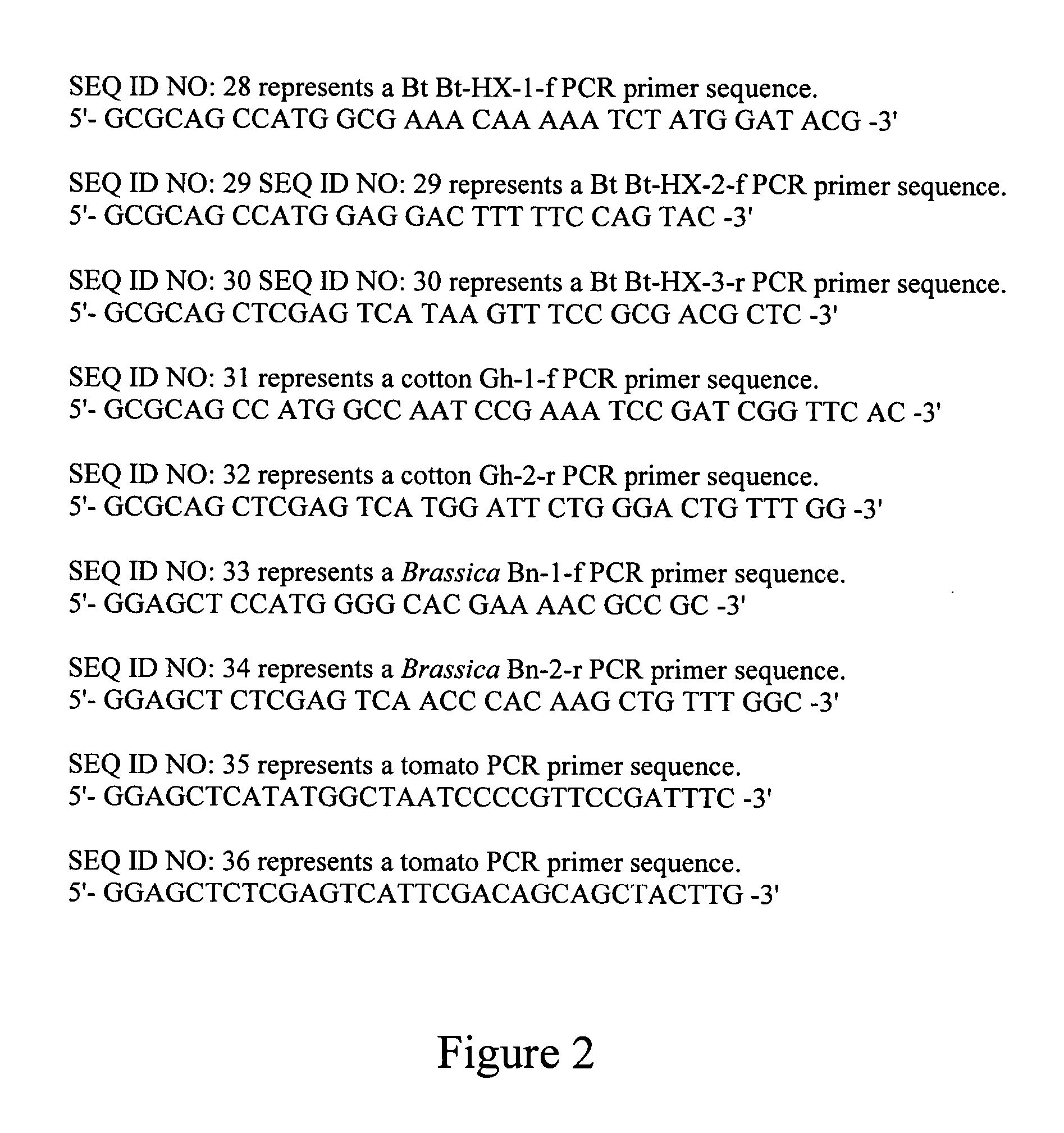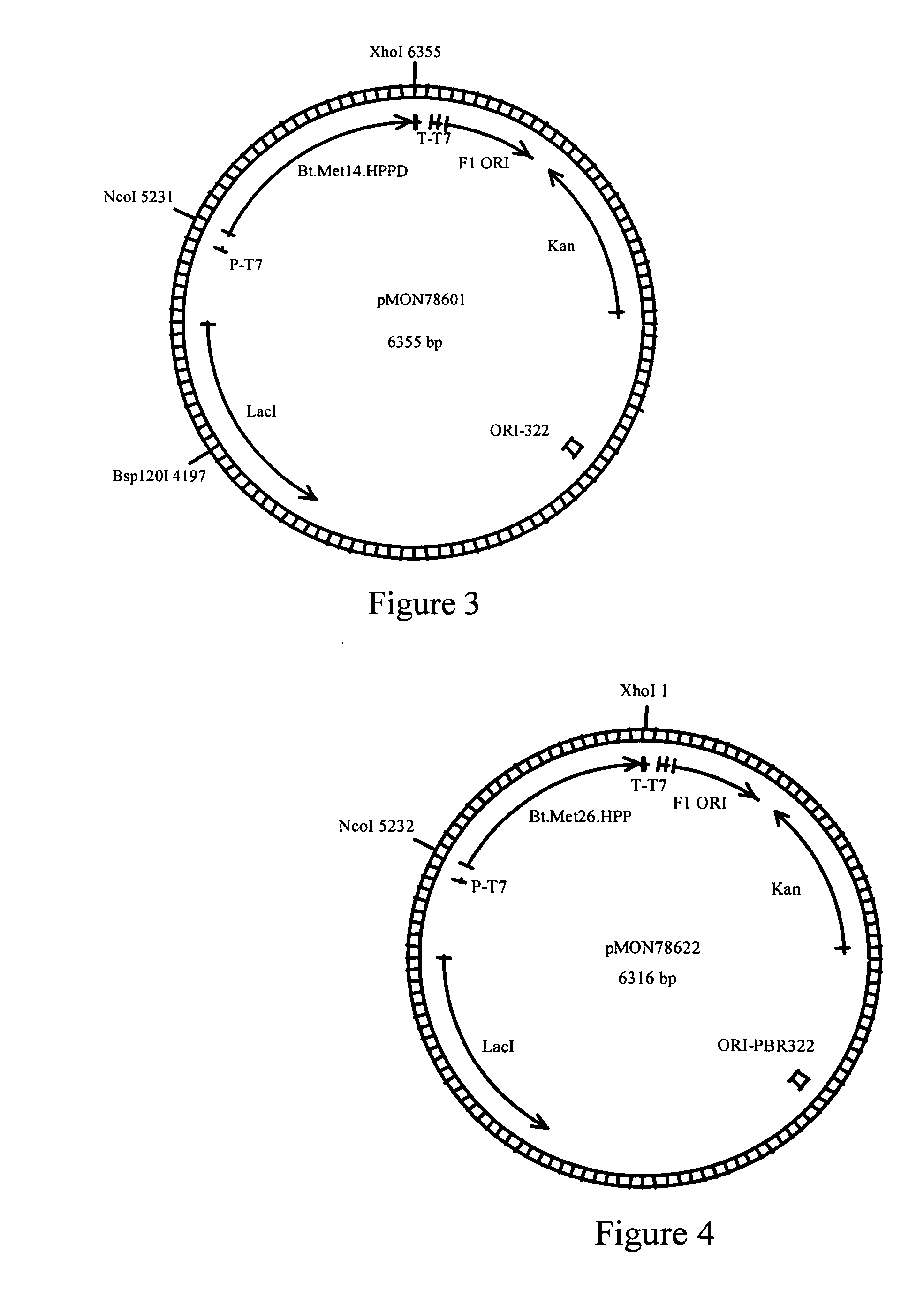Genes encoding 4-Hydroxyphenylpyruvate dioxygenase (HPPD) enzymes for plant metabolic engineering
a technology of phenylpyruvate dioxygenase and plant metabolic engineering, which is applied in the field of plant genetics and biochemistry, can solve the problems of relatively high cost of supplements and the difficulty of achieving the recommended daily intake of 15-30 iu of vitamin e from the average american diet, and achieve the effect of increasing the ability of plants to withstand stress
- Summary
- Abstract
- Description
- Claims
- Application Information
AI Technical Summary
Benefits of technology
Problems solved by technology
Method used
Image
Examples
example 1
[0248] This example sets forth the isolation of HPPD DNA coding region sequences. Using the BlastN protocol (Altschul et al., J. Mol. Biol., 403-410, 1990; National Center Biotechnology Information), the HPPD DNA sequences from Synechocystis sp. PCC6803 (SEQ ID NO: 1), and Arabidopsis thaliana (SEQ ID NO: 2) were used as search queries against bacterial and plant polynucleotide databases. Candidate gene sequences with an E-value score of 1e−8 or lower were obtained from a cotton ‘seed coat’ cDNA library, a cotton leaf cDNA library, a Brassica napus silique cDNA library (as used herein, a silique is a slender elongated two-valved dehiscent many-seeded fruit capsule that is characteristic of the mustard family, which opens by sutures at either margin, and has two parietal placentas), a soybean seed cDNA library, a tomato cDNA library, a Bacillus thuringiensis (Bt) genomic DNA library, and a Sphingomonas elodea genomic DNA library.
[0249] The cotton ‘seed coat’ cDNA library was constru...
example 2
[0259] This example sets forth the analysis of HPPD activity in cell free extracts of transformed E. coli cells. Polynucleotide sequences encoding HPPD enzymes from Arabidopsis (SEQ ID NO: 2), Bt (SEQ ID NO: 7), Brassica (SEQ ID NO: 19), cotton (SEQ ID NOs. 15 and 17), Synechocystis (SEQ ID NO: 1), and tomato (SEQ ID NO: 21), were expressed in E. coli and their resulting HPPD enzyme activity measured qualitatively by colorimetric reaction or analytically by reverse phase-high performance liquid chromatography (RP-HPLC). In the case of SEQ ID NOs: 15, 17, and 21, the 5′ sequences encoding the CTPs were removed as described in Example 1.
[0260] Enzymatically active HPPDs, isolated from a number of plant and bacterial sources, have been shown to cause a brown coloration to the broth when expressed in heterologous expression systems such as E. coli. The brown coloration is due to a melanin-related pigment that results from the accumulation and cellular excretion of homogentisic acid (HG...
example 3
[0266] This example sets forth the construction of plant transformation vectors containing tocopherol pathway genes in combination with HPPD genes to increase seed tocopherol levels. To test the in planta performance of HPPD sequences from Arabidopsis thaliana, Bacillus thuringiensis, Gossypium hirsutum, and Synechocystis sp. PCC6803, the aforementioned genes were cloned under the control of a napin promoter (U.S. Pat. No. 5,420,034, herein incorporated by reference) in a 3-gene vector containing an HPPD, a bifunctional prephenate dehydrogenase (Eh.tyrA) (SEQ ID NO: 25), and a homogentisate phytyltransferase (At.Atpt2) (SEQ ID NO: 26). The 3-gene vector containing the Bacillus thuringiensis HPPD (Bt.Met14.HPPD) (SEQ ID NO: 7) was generated as follows: pMON78601 (FIG. 3) was subjected to a double restriction enzyme digest with NcoI and XhoI, and the 1124 bp fragment containing the coding region of the Bt.HPPD-gene was subsequently gel-purified, using a Qiagen spin column kit and the ...
PUM
| Property | Measurement | Unit |
|---|---|---|
| weight | aaaaa | aaaaa |
| temperature | aaaaa | aaaaa |
| temperature | aaaaa | aaaaa |
Abstract
Description
Claims
Application Information
 Login to View More
Login to View More - R&D
- Intellectual Property
- Life Sciences
- Materials
- Tech Scout
- Unparalleled Data Quality
- Higher Quality Content
- 60% Fewer Hallucinations
Browse by: Latest US Patents, China's latest patents, Technical Efficacy Thesaurus, Application Domain, Technology Topic, Popular Technical Reports.
© 2025 PatSnap. All rights reserved.Legal|Privacy policy|Modern Slavery Act Transparency Statement|Sitemap|About US| Contact US: help@patsnap.com



